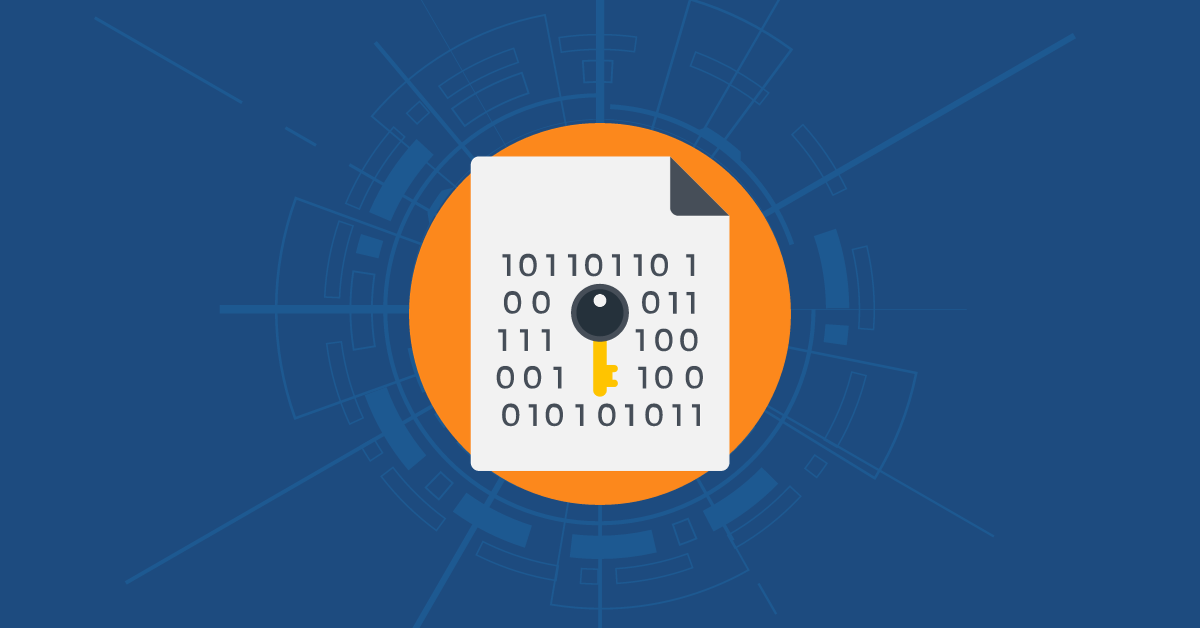
Developers and organizations are today faced with the constant threat of malicious actors stealing their software programs. And that’s not just it; threat actors can today use an application’s source code to either make it unavailable, steal sensitive data, or use it for ransom. That’s why organizations must secure sensitive software components and algorithms. One technique they can use is code encryption. Code encryption refers to transforming an application’s source code into an unreadable format (ciphertext) in a process known as cryptography.
Because data encryption is one of the most recognized types of encryption, many people often confuse code encryption with it. However, the two refer to different things, even though, in essence, they use the same technique (cryptography) for protecting applications.
As the name implies, data encryption involves protecting or securing data from attackers. It is the process of changing sensitive data from a format that can be read and understood by humans into one that needs deciphering.
Code encryption prevents malicious actors from stealing software’s intellectual property and using reverse engineering. It’s also important for enhancing data security.
In a highly competitive software market, competitors will do anything to get ahead of everyone else. It shouldn’t, therefore, be surprising that these individuals would go as far as stealing an application’s intellectual property, which includes its unique algorithms, innovative ideas, and proprietary features.
With code encryption, developers and organizations can prevent intellectual property theft by scrambling the source code into an unreadable format, thereby safeguarding their competitive edge.
Reverse engineering involves deciphering how an application works by analyzing its source code. While reverse engineering is considered legal if done with the right intention, it can sometimes be used by malicious actors for the wrong reasons, such as creating duplicates for commercial advantage and finding vulnerabilities to exploit.
Even though organizations can enhance data security with data encryption, code encryption can also help, especially if the application they are using contains or handles sensitive data. By encrypting the source code, developers ensure that malicious actors can’t access or tamper with the data these applications process.
There are several techniques developers can use to encrypt source code, such as:
Obfuscation refers to making code hard to understand by changing its executables while maintaining its functionality. This process is especially useful for protecting applications from revere engineering by changing the code’s logic. Developers can use either partial or complete obfuscation to protect applications through several methods:
Instead of leaving source code as is, developers can break it up into smaller units, symbols, or tokens. After tokenization, these tokens are then encrypted individually to ensure hackers don’t decipher them.
Using cryptographic algorithms for code encryption involves using well-established mathematical procedures and techniques to scramble source code into an unreadable format for both humans and machines. There are several cryptographic algorithms developers can leverage:
For developers and organizations that are still skeptical about code encryption and its importance, here are some real-life attacks that could have been prevented with source code encryption:
In 2021, Electronic Arts (EA) fell victim to hackers who stole one of its most popular source codes, Frostbite, that powers games such as FIFA. According to reports, the source code wasn’t the only thing the hackers accessed — they also obtained 780 GB of data. Confirming the reports, an EA spokesman said that while this was true, the hackers did not access player information, which could have resulted in exposing sensitive data for millions of accounts.
In February 2022, hackers were able to breach Nvidia, a chip-making company in the U.S., causing several problems. For one, the hackers accessed source code for the company’s Deep Learning Super Sampling (DLSS) technology used in improving the resolution of low-quality images. The hackers went further and leaked the source code online. They also obtained access to Nvidia’s proprietary hash rate limiter for cryptocurrency mining as well as data belonging to company employees.
While code encryption is essential for software security, organizations must approach it in a way that ensures it is foolproof.
One way to ensure that code encryption is effective is choosing the right code encryption tools. Developers must understand that while one tool might work for a similar application, they should consider their application’s unique requirements by evaluating factors such as the level of security required, performance, compatibility, etc.
It’s also important to understand that code encryption isn’t just a one-time thing. Organizations must keep checking for new vulnerabilities in their source code that hackers can exploit and, therefore, improve their code encryption methods.
Lastly, code encryption is just one small piece of the bigger software security. To ensure applications are secure, developers must combine code encryption with other forms of security, such as authentication and access controls.
Code encryption isn’t a nice-to-have thing for developers and organizations that want to protect their software applications; it’s a must-have. With Dotfuscator, developers can ensure that source code is secure, not just during development but even after launching the application. Dotfuscator utilizes string encryption — an effective and reliable method of code encryption — to effectively scramble an application’s source code.
Start your free trial with PreEmptive today and protect your apps against reverse engineering and the data breaches it brings.